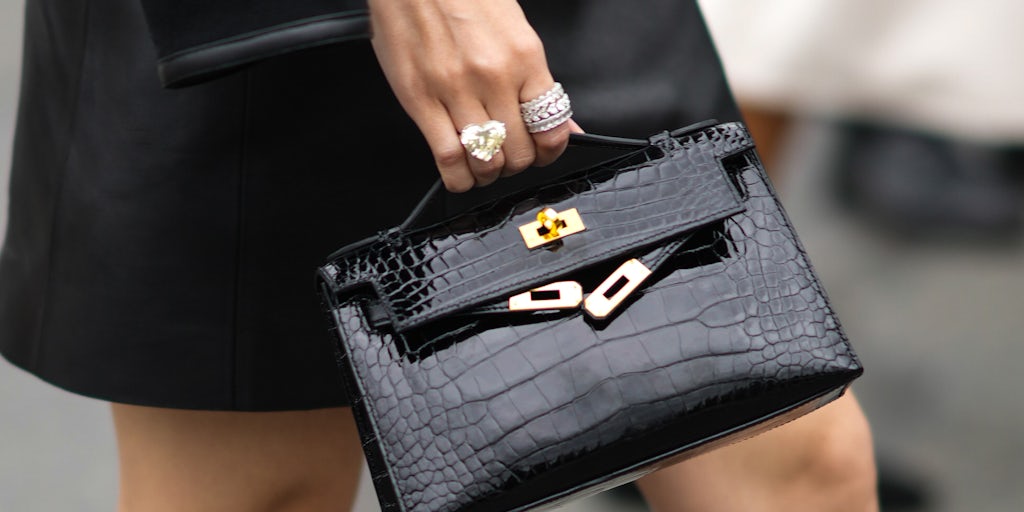Irène Silvagni, Former Creative Director of Yohji Yamamoto, Dies – WWD
PARIS — Irène Silvagni, the former creative director of Yohji Yamamoto and fashion editor of Vogue Paris, died Thursday after a long illness.
Silvagni was born and raised in Paris, and began her career at Elle magazine, before moving into the Vogue universe, first as European editor for the U.S. edition and later as the fashion editor of Vogue Paris. During her time at the magazine she was known for championing then-unknown photographers such as Peter Lindbergh, Steven Meisel, Bruce Weber, Paolo Roversi and Ellen von Unwerth. She was known for her visionary embrace of new ideas, as well as her elegance and kindness.
In 1981, she was in the audience as an editor when Yohji Yamamoto and Rei Kawakubo showed for the first time in Paris in what were then considered shocking collections, but would turn out to revolutionize fashion.
Meeting Yamamoto led to a decades-long creative partnership as Silvagni served as the designer’s creative director after she departed Vogue Paris.
“She really had a love story with Yohji Yamamoto because she respected him so much,” Inès de la Fressange, a longtime friend, told WWD. While the Japanese designers were challenging Parisian norms, causing a stir and receiving poor reviews, Silvagni embraced the direction. “It was a big, big change. For somebody that was young in the ’50s, it could have been difficult to understand, but she knew that something was happening.”
Silvagni and Yamamoto’s partnership became groundbreaking. “One can be very proud of that, to be the consultant of a genius. She was not afraid of anything. She was convinced he was fresh and he loved her work,” said de la Fressange.
Her time at Vogue, where she put de la Fressange on the cover when the model was over 30 — then a rarity in the fashion world — was enriched by her love of art.
“She comes from a generation of women who thought everything was possible. Because of her knowledge, knowing a lot about painters and writers, she could bring this spirit into fashion. She knew that painters in the 1930s were before their time, and I think she was convinced that in fashion it had to be the same. She was not somebody following something, she wanted to discover.”
De la Fressange, whose children called Silvagni Aunt Irène, also recalled her kindness and her sprawling farmhouse in Provence, where she was known to welcome many people from the fashion industry over the years. “When I think about Irène, I immediately think about the people around her and the people she loved, because she had this admiration for gifted and talented people. She was creative and clever and open-minded, that’s why she was so close to many photographers and designers. She could really understand their creativity without any prejudice.”
Nathalie Ours, who worked with Silvagni during her time at Yohji Yamamoto, said her kindness carried through to the rest of the team.
“She was not only inspiring for Yohji, but for all the people around her. She had a vision in a very generous way, She was always ready with new ideas to open eyes,” said Ours. “It’s amazing how much we learned from her and the way that she was so generous. Sometimes people are very creative but not necessarily very generous. But she was generous, kind and really, really funny.”
About her time at Vogue and the legacy she left with fashion photographers, Ours added: “She worked with a generation of photographers who have become iconic, and she made it happen really.”
Photographer Nicoletta Santoro, now creative director for Town & Country who began working with Silvagni during her own career with international Vogue editions, was a longtime friend.
“For me, Irène was far more than just the editor of French Vogue. She was like a second mother to me and she was my mentor. When I moved to Paris, newly married with twins, she supported my creativity, she gave a home to my visual dreams, and she nurtured and pushed me. She also guided me through the secrets of the Parisian life and her love for her city ran deep,” Santoro told WWD.
“Irène also fought to nurture a new generation of talent who were outsiders at the time, giving breaks to everyone I brought in: Peter Lindbergh, Steven Meisel, Paolo Roversi, Max Vadukul. My life would not have been the same without her and she was a visionary and doyenne of fashion unlike any other.”
“Even if it seems cliché, she was always available and attentive. Her sense of fashion, and above all of elegance, especially in her choice of jewelry balanced with the joie de vivre inherited from a childhood marked by war,” added author Gerald Cohen, who met Silvagni when she was at Vogue and maintained a friendship with her through the years. “She obviously inspired and accompanied the minimalist movement of the era, particularly supporting Ann Demeulemeester and the Japanese designers, so it was natural that she became the adviser of Yohji Yamamoto. She had of course worked with the greatest photographers including Oliviero Toscani, they fed each other on their work. It was only natural that her daughter Alexia would become a renowned photographer as well.”
Silvagni spent a life surrounded by art and artists. She was married to Giorgio Silvagni, producer of the Palme d’Or winner “Eternity and a Day,” and her daughter Alexia Silvagni is a photographer who took care of her mother in her last years. Her son, Jerome Silvagni, passed away in 2018.




